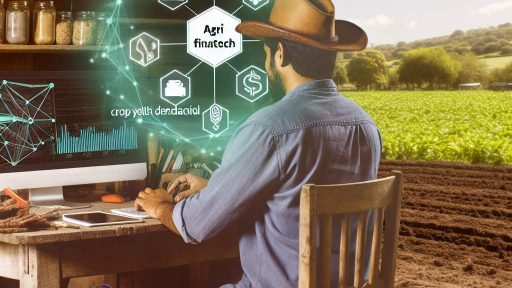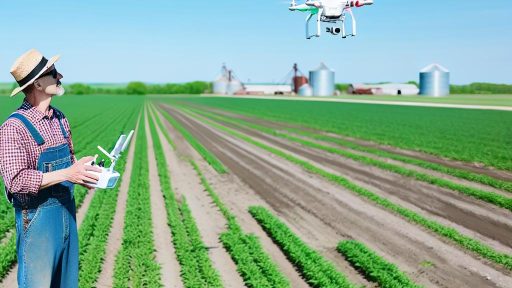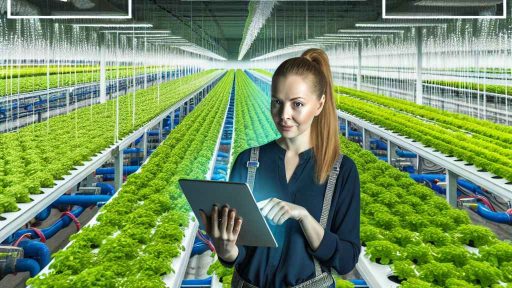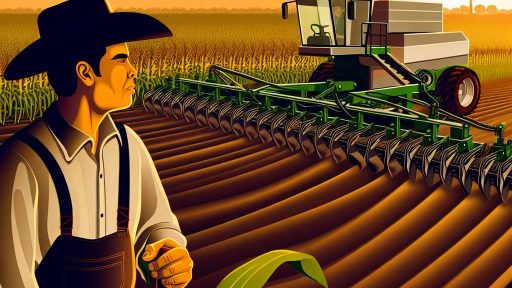Introduction to IoT and Its Relevance in Sustainable Agriculture
The Internet of Things (IoT) connects devices and systems through the internet.
This technology enhances data collection and communication in various fields.
One significant application of IoT is in sustainable agriculture.
Sustainable agriculture aims to meet current food demands without compromising future resources.
IoT plays a crucial role in achieving this goal by optimizing farming practices.
Understanding the Role of IoT
IoT devices gather real-time data from farms.
These devices include sensors, drones, and satellite imagery.
They monitor soil health, moisture levels, and crop growth.
Farmers use this data to make informed decisions.
Consequently, they can optimize resource use and reduce waste.
Enhancing Efficiency and Productivity
IoT technology significantly improves agricultural efficiency.
For instance, precision farming tailors resource application to specific needs.
This method minimizes resource waste and maximizes crop yield.
Furthermore, farmers can automate irrigation systems with IoT devices.
Automated systems respond to real-time weather and soil conditions.
Transform Your Agribusiness
Unlock your farm's potential with expert advice tailored to your needs. Get actionable steps that drive real results.
Get StartedPromoting Sustainable Practices
IoT helps farmers adopt more sustainable practices.
By monitoring environmental conditions, they can reduce chemical usage.
This reduced usage decreases the impact on surrounding ecosystems.
Additionally, farmers can track livestock health through smart collars.
This enables better animal welfare and reduced mortality rates.
Case Studies of IoT in Action
Many companies are successfully implementing IoT in agriculture.
For example, Agri-Tech has developed robust soil sensors.
These sensors collect data on nutrient levels and pH balance.
Another example includes DroneScape, which utilizes drones to monitor crop health.
Their aerial data helps farmers detect issues early and take corrective actions.
Challenges and Future Potential
Despite its benefits, IoT in agriculture faces challenges.
Data security and privacy remain significant concerns for farmers.
Additionally, high initial costs can deter small-scale farmers.
However, as technology evolves, solutions to these challenges will emerge.
The future of IoT in sustainable agriculture looks promising.
Key IoT Technologies Driving Agricultural Sustainability
Smart Sensors
Smart sensors collect real-time data from the field.
They monitor soil moisture, temperature, and nutrient levels.
This information helps farmers make informed decisions.
As a result, they can optimize water and fertilizer usage.
Drones and Aerial Imaging
Drones offer a bird’s-eye view of agricultural land.
These devices capture high-resolution images for analysis.
Farmers can assess crop health and detect pest issues early.
Consequently, they can implement targeted interventions.
Precision Agriculture
Precision agriculture uses data analytics to enhance crop yields.
Showcase Your Farming Business
Publish your professional farming services profile on our blog for a one-time fee of $200 and reach a dedicated audience of farmers and agribusiness owners.
Publish Your ProfileFarmers apply resources based on specific field requirements.
This approach minimizes waste and maximizes efficiency.
Moreover, it reduces environmental impact significantly.
Blockchain Technology
Blockchain enhances transparency in the agricultural supply chain.
This technology tracks product origins and movement.
Consumers gain trust in purchasing sustainable products.
Ultimately, it encourages responsible farming practices.
Farm Management Software
Farm management software streamlines agricultural operations.
This software provides tools for planning and monitoring.
Farmers manage resources effectively using this technology.
It simplifies data tracking to enhance decision-making processes.
IoT-Enabled Greenhouses
IoT technology turns traditional greenhouses into smart operations.
These greenhouses use automated systems for optimal conditions.
They regulate temperature, humidity, and light levels uniformly.
This leads to improved crop quality and resource efficiency.
Precision Farming: Utilizing IoT for Efficient Resource Management
What is Precision Farming?
Precision farming applies advanced technology to improve agricultural practices.
It focuses on managing variability in fields to enhance crop yields.
This approach ensures optimal usage of resources such as water and fertilizers.
Additionally, it minimizes waste and environmental impacts.
The Role of IoT in Precision Farming
The Internet of Things (IoT) revolutionizes precision farming.
Sensors collect real-time data on soil quality, moisture levels, and weather conditions.
This data helps farmers make informed decisions about planting and harvesting.
Moreover, IoT devices can automatically manage irrigation systems.
Benefits of Using IoT in Agriculture
- Improved resource management leads to cost savings.
- Enhanced crop monitoring allows for timely interventions.
- Data analysis increases operational efficiency.
- Sustainable practices contribute to environmental conservation.
Examples of IoT Applications in Precision Farming
Farmers use drones equipped with sensors for aerial imaging of fields.
This technology identifies problem areas needing attention.
Additionally, smart irrigation systems adjust watering schedules based on real-time data.
Farm management software analyzes data to optimize planting strategies.
Challenges of Implementing IoT Solutions
Adoption of IoT in farming faces various challenges.
High initial investment costs can deter some farmers.
Data security and privacy concerns also pose significant issues.
Lastly, a lack of technical knowledge may hinder effective utilization.
The Future of Precision Farming with IoT
The future of agriculture relies heavily on IoT advancements.
Technological innovations will likely improve connectivity and data processing.
This enhancement will facilitate better decision-making processes in farming.
Ultimately, it promises a more sustainable and efficient agricultural sector.
You Might Also Like: Smart Energy Management Systems for Modern Farms
Smart Irrigation Systems
Overview of Smart Irrigation
Smart irrigation systems utilize modern technology to optimize water use.
These systems leverage sensors and controllers to monitor soil moisture levels.
Consequently, they can adjust water delivery based on real-time data.
This results in efficient water usage, reducing waste significantly.
Showcase Your Farming Business
Publish your professional farming services profile on our blog for a one-time fee of $200 and reach a dedicated audience of farmers and agribusiness owners.
Publish Your ProfileBenefits of Smart Irrigation
Implementing smart irrigation offers numerous advantages for farmers.
- It conserves water by delivering it only when needed.
- Farmers can save on water costs, enhancing profitability.
- Crops receive optimal watering, improving growth and yields.
- It minimizes runoff and promotes healthier soil conditions.
Overall, these benefits contribute to sustainable agricultural practices.
How Smart Irrigation Works
Smart irrigation systems operate using various technologies.
First, soil moisture sensors detect the current moisture levels in the ground.
Next, weather data integrates into the system, assessing rainfall forecasts.
Then, controllers send signals to irrigation systems to adjust accordingly.
This cycle ensures that crops receive the right amount of water, no more or less.
Real-World Applications
Several farms have reported success with smart irrigation solutions.
For instance, Green Meadow Farms installed a smart irrigation system recently.
They observed a decrease in water consumption by 30% since implementation.
Additionally, Sunny Acres Orchard achieved a 20% increase in fruit yield.
Such success stories illustrate the impact of technology in agriculture.
Challenges and Considerations
While smart irrigation systems offer significant benefits, challenges exist.
Initial setup costs can be high for some farmers.
Moreover, there can be a learning curve associated with new technologies.
Therefore, adequate training and support are critical for successful implementation.
Farmers should consider these factors before transitioning to smart systems.
Uncover the Details: Improving Farm Productivity With Advanced Management Software
Crop Monitoring and Disease Detection with IoT Sensors
Introduction to IoT in Agriculture
The Internet of Things (IoT) is transforming agriculture.
Farmers can now use sensors to monitor crops effectively.
With real-time data, they can make informed decisions.
How IoT Sensors Work
IoT sensors gather data from the field continuously.
They monitor various parameters such as soil moisture and temperature.
Additionally, they track crop health and nutrient levels.
This data is transmitted to farmers through cloud-based systems.
Benefits of Crop Monitoring
One major benefit is improved yield prediction.
Farmers can identify issues early and respond appropriately.
This proactive approach reduces crop losses due to disease.
Furthermore, it enhances resource management.
Diseases and Pest Detection
Sensors can detect early signs of pests or diseases.
For example, changes in leaf temperature may indicate stress.
In addition, specific sensors can analyze soil conditions.
This information helps farmers implement targeted treatments.
Case Study: Smart Farm Solutions
GreenField Innovations uses IoT for crop monitoring.
They employ drones equipped with sensors to assess fields.
This method allows for large-scale monitoring in real-time.
Consequently, farmers benefit from detailed insights and recommendations.
Implications of IoT in Agriculture
IoT sensors enhance agricultural practices significantly.
They lead to higher efficiency and better crop management.
These technologies promote sustainable agriculture.
Showcase Your Farming Business
Publish your professional farming services profile on our blog for a one-time fee of $200 and reach a dedicated audience of farmers and agribusiness owners.
Publish Your ProfileGain More Insights: Understanding Agri-Fintech Services For Sustainable Farming Practices
IoT-based Livestock Management for Improved Animal Welfare
Overview of IoT in Livestock Management
IoT technology transforms livestock management practices.
This innovation provides real-time monitoring of livestock health.
Farmers can track location, feeding habits, and behavior effectively.
Consequently, they gain insights into herd dynamics and individual animals.
Health Monitoring Systems
Wearable devices monitor vital signs of livestock continuously.
These devices alert farmers to any abnormalities promptly.
Regular data collection helps in early disease detection.
In turn, this reduces treatment costs and improves overall health.
Nutritional Management
IoT sensors assess feed quality and nutritional content.
Farmers adjust diets based on real-time data insights.
This approach promotes optimal growth and milk production.
Healthy animals result in higher yields and lower mortality rates.
Behavioral Analysis
IOT technology observes and records animal behavior patterns.
Farmers can identify signs of stress or discomfort effectively.
By analyzing this data, they can improve living conditions.
A comfortable environment leads to happier, healthier animals.
Automated Feeding Systems
Automated systems ensure livestock receive consistent nutrition.
Smart feeders dispense food based on individual animal needs.
This technology reduces waste and optimizes feed efficiency.
Moreover, it saves time for farmers, allowing them to focus on other tasks.
Enhanced Traceability
IoT devices improve the traceability of livestock from farm to market.
Farmers can provide transparent records to consumers about animal welfare.
This transparency builds trust between producers and consumers.
Ultimately, it enhances the marketability of farm products.
Case Studies of Success
Many farmers report increased productivity through IoT adoption.
For instance, Green Pastures Dairy implemented IoT monitoring.
They saw a 20% increase in milk production within six months.
Similarly, FarmTech Livestock reported reduced veterinary costs by 15%.
Challenges and Considerations
Despite the benefits, farmers face challenges in IoT implementation.
Initial costs for IoT devices and technology can be high.
Additionally, farmers require training to use these technologies effectively.
However, these challenges can be mitigated with proper planning.
You Might Also Like: Harnessing Geothermal Energy for Farm Operations
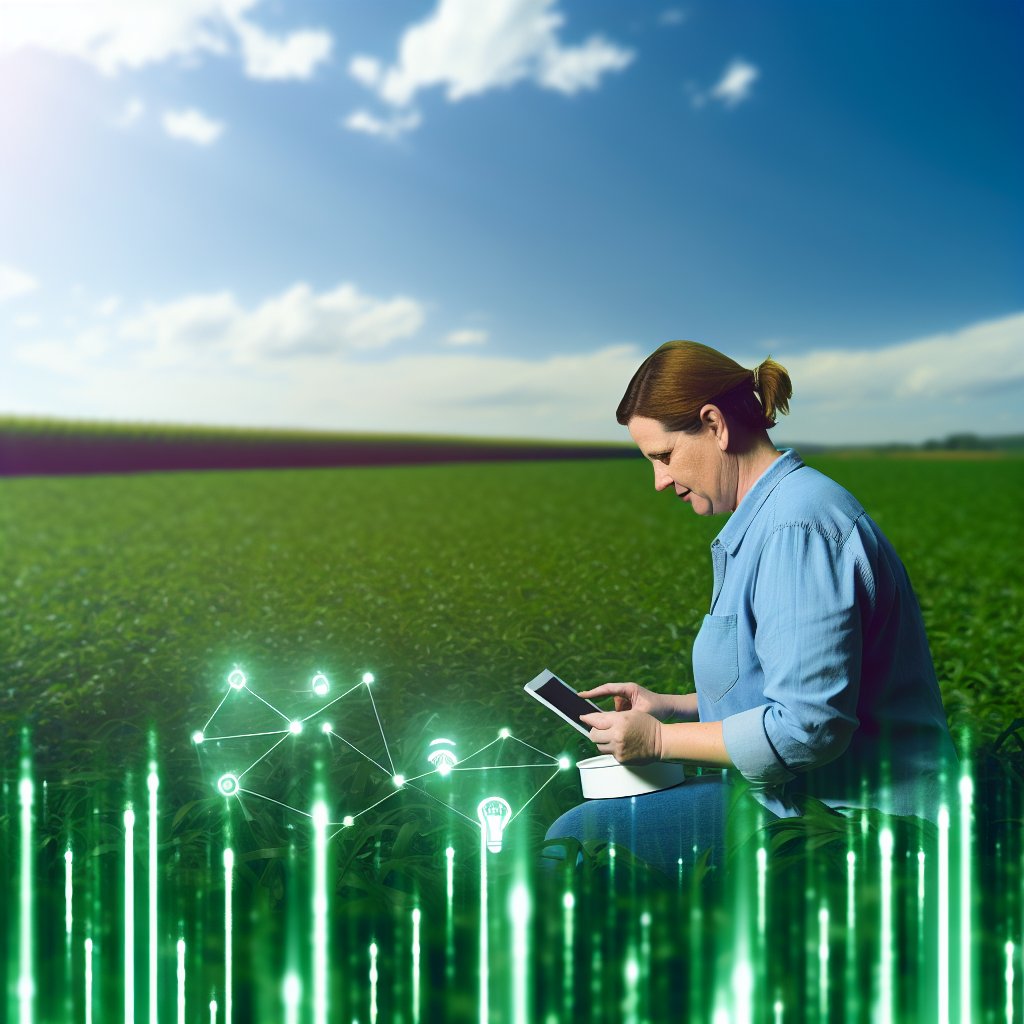
Data Analytics and Decision-Making in Sustainable Farming Using IoT
Role of IoT in Agriculture
The Internet of Things (IoT) revolutionizes agricultural practices.
It connects various devices for collecting real-time data.
This connectivity enhances decision-making capabilities for farmers.
Farmers can now monitor soil quality, moisture levels, and weather conditions.
Data Collection Techniques
IoT devices use sensors to gather crucial agricultural data.
These sensors measure parameters like temperature, humidity, and nutrient levels.
Showcase Your Farming Business
Publish your professional farming services profile on our blog for a one-time fee of $200 and reach a dedicated audience of farmers and agribusiness owners.
Publish Your ProfileAdditionally, drones can capture aerial images for crop assessment.
Farmers can deploy these technologies at minimal costs.
Types of Data Gathered
- Soil moisture content
- Weather patterns
- Pest and disease prevalence
- Crop growth rates
Data Analysis for Informed Decisions
Analyzing collected data empowers farmers to make informed decisions.
This analysis can identify trends and patterns in agricultural practices.
Moreover, it helps in optimizing resource allocation and use.
Farmers can apply precise data to enhance crop yield.
Predictive Analytics in Agriculture
Predictive analytics plays a crucial role in sustainable farming.
It uses historical data to forecast future agricultural outcomes.
Farmers can anticipate weather changes and plant diseases.
This proactive approach allows for timely interventions.
Improving Efficiency and Sustainability
IoT-based data analytics significantly improves farming efficiency.
Farmers can reduce water usage through smart irrigation systems.
Additionally, they can minimize chemical inputs via targeted application.
This helps in promoting sustainable agricultural practices.
Examples of Successful IoT Implementations
Many farmers report success using IoT technologies.
For instance, GreenFields Farms implemented smart sensors.
They observed a 20% reduction in water usage and increased yields.
Such successes highlight the effectiveness of IoT in agriculture.
Challenges in IoT Adoption
Despite numerous benefits, IoT adoption comes with challenges.
Initial setup costs can be substantial for some farmers.
Additionally, technological literacy is often required for effective use.
Furthermore, concerns around data privacy and security persist.
Strategies to Overcome Challenges
Education and training can enhance farmers’ technological skills.
Subsidies may help reduce the financial burden of IoT implementation.
Moreover, collaborating with tech companies can provide crucial support.
Ultimately, addressing these challenges is vital for broader adoption.
Challenges and Barriers to IoT Adoption in Agriculture
Infrastructure Limitations
Many rural areas lack reliable internet connectivity.
This limitation hinders the deployment of IoT devices.
Moreover, inadequate power supply can disrupt operations.
Farmers often face high costs when upgrading infrastructure.
High Initial Investment
The cost of implementing IoT technology can be daunting.
Farmers may struggle to justify large expenditures upfront.
Furthermore, ongoing maintenance expenses can add up.
Many smaller farms operate on tight budgets.
Data Security Concerns
IoT devices can be vulnerable to cyberattacks.
Farmers worry about the safety of their sensitive data.
Additionally, unauthorized access can threaten farm operations.
There is a need for stronger security protocols to protect assets.
Skill Gaps and Training Needs
Farmers may lack the technical skills to operate IoT devices.
Training programs are essential for effective device usage.
Showcase Your Farming Business
Publish your professional farming services profile on our blog for a one-time fee of $200 and reach a dedicated audience of farmers and agribusiness owners.
Publish Your ProfileMoreover, many farmers do not understand data analytics.
Comprehensive education can bridge the skill gap in agriculture.
Resistance to Change
Some farmers prefer traditional farming methods.
This resistance can slow the adoption of innovative techniques.
Education and success stories may encourage more farmers to adapt.
Engaging local communities can promote acceptance of new technologies.
Future Trends
The Evolving Role of IoT in Sustainable Agriculture
The Internet of Things (IoT) is transforming sustainable agriculture practices.
Farmers now utilize IoT devices to collect critical data.
These devices provide insights into soil health, crop conditions, and weather patterns.
By using sensors, farmers can monitor moisture levels in real-time.
This information helps prevent over-irrigation and water waste.
Moreover, automated systems can optimize fertilizer use.
This leads to improved crop yields while minimizing environmental impacts.
Data analytics platforms are emerging, facilitating better decision-making.
Farmers can analyze trends and predict future conditions with accuracy.
Furthermore, remote monitoring systems enhance agricultural efficiency.
These systems allow farmers to manage operations from anywhere.
This flexibility is crucial for adapting to changing climate scenarios.
Enhanced Resource Management
The role of IoT extends to resource management in agriculture.
Smart irrigation systems adjust water usage based on weather forecasts.
This minimizes water wastage and promotes sustainability.
IoT-enabled drones are also emerging in the agricultural sector.
They assist in monitoring crop health and identifying pest infestations.
As a result, targeted interventions can be employed promptly.
Precision Agriculture Techniques
Precision agriculture is gaining traction thanks to IoT technologies.
Farmers can now apply inputs like fertilizers and pesticides more efficiently.
For instance, variable rate technology customizes input application.
This approach conserves resources and boosts productivity.
Moreover, machine learning algorithms analyze data for continuous improvement.
Farmers are thus empowered to make informed decisions.
Collaboration and Innovation
Collaboration among various stakeholders drives IoT innovation.
Tech companies partner with agriculture experts to develop new solutions.
This collective effort fosters the creation of smarter agricultural tools.
Additionally, cooperative platforms are essential for data sharing.
Farmers can access shared insights that promote collective growth.
This approach cultivates a community focused on sustainable practices.
Additional Resources
How the internet of things technology improves agricultural …
Smart Farming: Internet of Things (IoT)-Based Sustainable Agriculture

